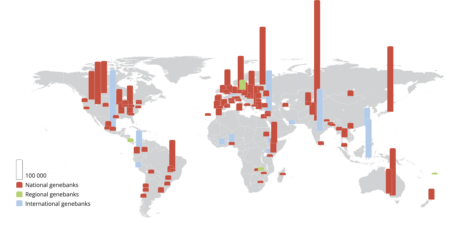As well as the 3rd State of the World’s Plant Genetic Resources for Food and Agriculture, the 2nd State of the World’s Forest Genetic Resources for Food and Agriculture was also launched at FAO Commission meeting the week before last. Some headline numbers? There are about 58,000 tree species worldwide, about 30% of whch are threatened and 1,400 and 1,100 species are included in in situ and ex situ conservation programs, respectively.
At least some of the data behind the forest report is to be found in FAO’s new global information system, SilvaGRIS, launched at the same time. SilvaGRIS joins a fairly crowded field — or perhaps I should forest — which includes various products from the World Agroforestry Centre, the restoration-focused Tree Diversity database, and Europe’s own portal EUFGIS. No doubt each does something different, but a guide through the thicket of resources might be useful.
